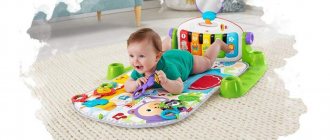Children are always playing games. They invent games on their own, or adopt them from peers, teachers, educators, and parents. Children do not always play under the strict supervision of adults, which is why it is so important to teach children safe, exciting and fun games.
The arsenal of games is varied: board games, mobile games, intellectual games, creative games, and educational games. Games can also be intended for home or large spaces - that is, for outdoor activities.
Perhaps, even if there is a playground, it is worth getting children interested in group games - this way they get to know each other more easily, learn to remember and apply the rules, interact with the game leader, develop physically and at the same time have fun.
Drawing
The simplest thing you can offer a child who has already played enough with dolls, cars and other toys is to draw. On the Internet, for younger children you can find pictures - coloring pages of your favorite cartoons, characters, animals, which you can print out and have fun coloring your favorite pictures. For older people, you can offer to draw your dream, future home or job. Thus, the child will be interested in dreaming, thinking and depicting his dreams in a picture. At the same time, mom or dad can help make a frame for the future picture together with the child, from any available materials. This is another interesting and useful activity. And the frame can be made from plasticine, cardboard or dough.
Age – 10-14 years: the older, the more difficult
We send fathers and sons to the store so as not to disturb them. And for mother and daughter - a day of fiery dancing, sports and karaoke! If you send dad and son a little further away (fishing, for example), then you can continue in the evening, having a warm and cozy bachelorette party in front of the TV with culinary joys and intimate conversations.
Evening of dance and fitness.- We carry out experiments. Why not cheat a little? All ages are submissive to chemistry! Moreover, there are a lot of interesting books that clearly and step-by-step describe the most interesting experiences for children and their parents. Even a teenager will be interested in creating a starry sky in a jar, a mini-volcano or a tiny stove.
- Let's shoot a clip. Your child sings amazingly and still doesn’t have his own video? Disorder! We'll fix it urgently! Today there are enough programs in which you can process videos. Moreover, they are simple and understandable even to a computer “teapot”. Shoot a song on video, add sound, create a video. Naturally, together with the child!
- Japanese dinner. We decorate the living room in Japanese style (it is not necessary to do any renovations, light decor is enough) and make sushi! Don't you know how? It's time to learn. You can start with the simplest sushi. The filling can be anything you want - from herring and shrimp to processed cheese with red fish. The most necessary things are a pack of nori sheets and a special “mat” for rolling rolls (“makisu”). You can use regular, round rice (just overcook it a little until it becomes sticky). Be sure to buy sushi chopsticks! This makes eating them much more interesting, especially if you don’t know how to do it.
- Let's learn to earn pocket money on our own! If your teenage child has no problems with the Russian language and has a desire to work, register him on one of the article exchanges and teach him to write these articles. If a child loves a computer so much, then let him learn to use it to his advantage.
- Have a Cinema Mania Day. Prepare delicious, favorite dishes with your children and watch your favorite movies all day.
- New life for old things. Is your daughter bored? Take out your craft basket, open the Internet and look for the most interesting ideas for bringing old clothes back to life. We make fashionable shorts from once torn jeans, an original shirt with stripes from one whose sleeves have worn out, scuffs on classic jeans, pom-poms on a scarf, and so on.
- We draw up a plan of mandatory tasks for the year. Doing this with your child is much more fun, and it’s a great opportunity to take your child away from the laptop for at least a couple of hours. Give your child a special diary (take yours away from your heart or buy a new one), and together write lists of to-dos and desires that need to be accomplished before the end of the year. Start implementing it immediately!
What do you play at home with your children? Share your parenting recipes in the comments below!
Making crafts
If the child does not like to draw, you can offer to make various crafts. For example, you can make many animals, birds, and a snowman from cotton pads, glue and colored paper. Such an activity will not be difficult, but will bring joy and delight from the crafts made.
Turn on your imagination, cut out pictures from different magazines and make a postcard or collage, stick on funny scenes and come up with a story, spend every minute of your child’s childhood together in a fun and useful way.
What to do with your baby outside the home
Often, when away from home, 3-4 year old children suffer from not knowing what to do.
In the summer, children 3-4 years old are attracted to the sandbox. All games with sand are educational. By building different figures, breaking through grooves, the baby learns shapes and volumes through his hands. Exposure through the hands has a beneficial effect on speech activity. Playing on the sand is interesting and very comfortable:
- You can “stick” many figures from wet sand using molds. For example, invite your child to create a sand park or prepare pies for a doll's lunch;
- on a flat surface you can “draw” a picture from sand.
Place plastic pins or bottles in the clearing and let the child learn to “ddle” the ball between them.
Great idea for a summer house - homemade paths
On playgrounds there is a mini-ring; give the ball and ask them to throw it into the basket, and from different distances.
Give your child colored crayons and let him draw on the asphalt. Show how to draw cages - your child will have fun jumping on them.
What to do with your baby at the dacha
At the dacha in the summer it’s easy to keep your baby busy:
- not a single child will refuse to splash in the water - a small inflatable pool will be enough for this;
- if the weather is not hot, then put a bucket of water and hand the fidget a baby watering can. Let him water the flowers;
- children love to help adults - give him a small shovel and instruct him to dig a garden bed - he will complete this task with joy.
An inflatable pool for a summer house - and interesting. and useful
What to do with your baby in the park
In the autumn park, invite your child to collect a collection of autumn leaves. Before your walk, prepare a bag or box where he will put his treasures.
Another option for an outdoor game is to offer the child a run, for example, to a green bench, to a large stone, to a rowan tree, etc.
.
Games with cereals
For kids who do not yet know how to use paints or scissors, you can offer them to play with cereals. Such activities develop the child’s motor skills and are very useful in development. Pour cereal onto a piece of paper and show your child how you can use your finger to draw a figure, flower or animal. If you don’t like this option, you can pour different cereals into a bowl and put the plates, ask the child to separate, for example, beans, peas and pasta into different containers, but always under supervision.
What types of activities can you do at home?
At home, the child can be occupied with the following:
- Children aged three and four years old love to reproduce the world around them on paper. Prepare pencils or markers for drawing with your child. Discuss what he wants to draw, ask what color the objects will be in his drawing. Give him large sheets of paper or even a piece of scrap wallpaper. The scale will captivate your little one, and he will be busy for a long time.
- Before giving him pencils, invite him to use a sharpener - he will then be more enthusiastic about drawing.
- You can keep your child busy playing with a hole punch. Show how a hole punch works, let it make confetti for the New Year holidays from old magazines.
- Cutting with scissors is also fun for kids. By the age of four, children can cut out simple figures. Make stencils of geometric shapes. Let him cut it out. And then build an applique with it.
A development board can keep a child occupied for a long time - You can give your child stencils of various objects (available on sale, or you can make them yourself from cardboard) or letters. The child traces the stencil and then paints it.
- It is difficult to force children to sculpt from plasticine alone. Roll him a lot of sausages - let him cut them into pieces, and then lay out the pattern on a sheet of cardboard.
- Stretch a string, give clothespins and let him hang his things and then collect them.
- Children are fascinated by working with carbon paper. Show him the technology of work. Rest assured that your child will engage in work with interest.
- Kinetic sand will help parents out; children will love this activity.
- You can buy stickers for children and give them an album - the child will stick until he uses all the stickers.
- You can also keep children busy by drawing with dots. Download such pictures from the Internet.
- Children may be interested in the magnifying glass. Give him small pictures and let him look at them with a magnifying glass.
- There is an interesting invention - puzzles. Choose sets for your baby according to age and interests. He will be studying for a very long time, rest assured.
Wooden puzzles for children 3-4 years old
Almost all of the proposed options are educational: kids are not only busy with exciting and useful activities.
If mom is preparing something from dough, then give the child a piece and let him contribute.
There is another interesting activity: take large beans, pasta and some peas, move them and instruct your child to sort them into three containers. Play it as the help you need around the house. Be sure to praise.
In general, the kitchen attracts both girls and boys - use your imagination, and your little helper will be happy to complete tasks.
Children will be happy to help in the kitchen
Outdoor games
If parents can spare time, children of different ages can be occupied with interesting physical exercises. Come up with relay races, competitions with obstacles, and, of course, come up with a reward for the child’s efforts. Passing an obstacle course will be an interesting fun. You can build a path using pillows, blankets, bowls, boxes and chairs. Come up with an exciting journey to the treasure. Both adults and small children will enjoy this game and will leave only warm and joyful memories.
Puppet show
Create a puppet theater, and it doesn’t matter if it’s only you and your child at home. There will be a wonderful theatrical performance. Preparing the screen is as easy as shelling pears. Cover two chairs with a sheet or blanket (you can take any fabric of suitable size). We use homemade toys. The mother goes behind the screen with the toy actors and a character appears in front of the child and communicates with the baby. The child can first explore the screen and the presenter hiding behind it, then lead the performance himself. Changing roles and places is also exciting and interesting. If there are ready-made finger or glove toys, it becomes even more interesting. A real action is played out, even a fairy tale or mini-play.
DIY sensory box for children
Sensory box - what is it? This is any available container, from a container to a basin, into which bulk filler is placed. It can be anything: cereals (buckwheat, semolina, peas, millet or rice), salt (fine or coarse sea salt), pasta of all shapes and sizes, sand, pebbles or small stones, cotton balls, pieces of foam rubber, buttons, aqua soil (hydrogel) or even water. The choice of filler depends on the age of the baby; the younger the baby, the larger the contents of the box should be.
The filler itself is a developmental material, but the child will quickly get tired of rummaging through it, so the contents of the box can be supplemented with small toys: small figurines of animals and birds, fruits and vegetables, small cubes and numbers, and everything that the parents’ imagination is enough for. Finding these little things of different shapes and colors develops the baby's sorting and classification skills. The older the baby, the larger the contents of the box, the more complex his sensory games become. For example, in a box you can organize an entire farm with cows, sheep and horses, which will have a field for grazing and even their own paddock.
You can dig into cereals or sand not only with your hands. This is a great opportunity to get acquainted with scoops, spatulas, buckets and watering cans.
How is a sensory box useful?
It’s not even worth talking about the development of fine motor skills once again. Handling small objects will calm the baby and help him develop perseverance and patience. New tactile sensations will be a good reason to learn new words and help you explore new shapes and textures.
By sorting through different toys, the baby learns a lot about different colors and improves coordination of movements. And, of course, such a game, where the rules are limited only by the child’s imagination, develops creative thinking.
Why are sensory boxes so convenient?
First of all, such boxes are convenient because they are easy and convenient to organize at home; in any apartment there is a suitable free box. Their contents are almost always at hand, and if not, then it can be easily, quickly and inexpensively fixed by going to the nearest store. After the game, the box can be carefully placed in a free corner so that you can take up the game again tomorrow. Any parent can do this; you don’t need any special skills, just attention and love for your baby.
At what age are babies interested in playing with a sensory box?
The main rule of playing with a sensory box is constant parental supervision and safe contents. With this approach, sensory games can be offered to even the youngest children who have already learned to sit. To begin with, you can put only large objects, such as pine cones, in the box. Then pour in grain or sand, add toys, not too small. With age, the contents of the box will become more complex and the number of items will increase.
There are no other age restrictions, although it is believed that the development of fine motor skills is relevant up to 3 years. But sensory boxes also provide many other skills, and you can even use them to learn counting and letters. You can make themed boxes, for example, fill a basin with water and arrange the seabed there. This way, your baby can play sensory play until he loses interest.
Educational games you can play at home
Here we will share with you the best options for what to play with your child at home. The games are suitable for one child and can easily keep a restless group busy.
Game of cities
This exciting game, when using a map, will also develop children's knowledge of geography. The first participant names any city. The second player's task is to name the city starting with the last letter of the first named city.
The third participant names a city ending with the last letter of the second city named, and so on. With any number of participants greater than two, the game will be interesting.
Dough modeling
Modeling from dough is more fun than from plasticine. Because eventually, after drying, the figures can be painted. Preparing play dough is very simple - you only need three ingredients: a glass of salt, a glass of flour, water.
Salt and flour are mixed, then water is gradually poured in. You can add 5 tablespoons of sunflower oil before adding water. To better mix the dough, use a blender.
Chess, checkers
For those parents who know the basic rules of playing chess and checkers, if they have the necessary details, it is not difficult to first organize training and then organize a tournament.
Sea battle
When it's pouring rain outside and the end of the day is still far away, teach your children to play sea battle. To do this, you need notebook sheets in a box. There can be two or three players. You can play with four players - two on two. The playing fields are drawn according to the number of players.
The classic game is played on playing fields with the number of squares like on a chessboard: eight in width and eight in height, for a total of sixty-four. Letters are written vertically, numbers are written horizontally. Thus, each cell has its own address.
On their field, each participant draws ships, of which everyone should have the same number - one four-cell, one three-cell, two two-cell, three one-cell. In this case, any configuration is allowed, but the ships cannot be placed close to each other - there must be a space of cells between the ships.
Ships can be given names - cruiser, Lincoln, submarine, boat. In addition to the main (own) field, the player also draws the fields of other participants whose ships he will shoot down.
Next, the first shooter is selected. If there are two players, then they take turns shooting. In this case, the shooter calls the names of the cells at which he is shooting, and the second player says: “hit”, “missed” or “killed”. After the first miss, the right to shoot passes to the enemy.
The goal of the game is to “kill” all enemy ships. During the game, the child develops logical thinking and develops his own strategy for waging a win-win battle.
Balda
Intellectual educational word game. On a playing field with an odd number of cells vertically and horizontally (you can play on a graphed board), a word is written in the middle of the field. Next, participants take turns adding one letter to the field in order to form a new word.
The goal of the game is to complete the letter so skillfully that the resulting word becomes larger. Each new word is scored by the number of letters. The winner of the game has the most points.
If a participant cannot come up with a word, he misses his turn, giving the right to play to the next participant.
Tic Tac Toe
The game is played on a field of nine cells. The first participant places a cross or a zero anywhere (the right to place one or another symbol can be played, just like the right to make the first move).
The task of each player is to place as many of his symbols on the field as possible, and the task of the other player is to prevent him from doing this; to do this, he must place his symbol in such a way as to block the opponent’s successful move.
Learning Morse Code
A simple and exciting game. You can write encryption to each other using Morse code, and then decrypt them. You can encrypt the message indicating the location where it is located. For example, candy. And then find her together.
Every child is talented from birth. Identifying his talents and abilities is the task of parents and educators. It is in play, communicating with peers and under the guidance of elders, that the child learns about the world around him, learns about the purpose of various objects and comprehends the essence of natural phenomena.
Some parents find it boring to play with their children, but playing together is useful and important for both parties, as it allows children and adults to get to know each other better and build trusting, emotionally close relationships. Games also contribute to the intellectual, social and physical development of the child.
After reading our article from beginning to end, you will learn how to play with children and will definitely find games that will be interesting to play not only for the child, but also for his mentors. Remember, raising talented and happy children is in the hands of loving and wise parents.
Children's game "Leaf and the wind"
Blank for the game
Thanks to this game, the child gets acquainted with the world around him, objects, and also which tree belongs to which leaf. We prepare leaves of different shapes and colors from colored paper (each leaf must correspond to a “real” leaf). It is advisable that the child does not see your work when you prepare leaves for the game. Also, place the prepared leaves around the room on various objects in advance. Now that everything is ready, call your child and play with him.
Age - 1-3 years: more imagination!
- Puzzles. If the baby is still very small, then the puzzles can consist of 2-3 pieces. Start small. Choose bright designs that will attract your child.
- Drawing with mom and dad! Who said that you need to draw carefully? You need to draw from the heart! Use watercolors, finger paints, gouache, flour, sand, etc. Is the child dirty? Nothing terrible - but so many emotions! Spread large sheets of whatman paper on the floor and create a fairy tale with your baby. Or you can dedicate an entire wall to creativity by covering it with cheap white wallpaper or attaching the same sheet of whatman paper. No limits for creativity! We draw with brushes and pencils, palms and cotton swabs, dish sponge, rubber stamps, etc.
- Search for treasure. We take 3-4 plastic jars, fill them with cereals (you can use the cheapest ones so you don’t mind spilling them) and hide a small toy at the bottom of each one. Both fun and useful (development of fine motor skills).
- Let's make beads! Again, we develop fine motor skills and creativity. We are looking in the bins for large beads (you can make them together with the child from dough or plastic), pasta rings, small bagels and anything that can be strung on a string. We make beads as a gift for our mother, grandmother, sister and all our neighbors. Of course, only under supervision so that the child does not accidentally swallow one of the elements of the future masterpiece.
- Egg run. You don’t have to take the eggs directly (otherwise running will be very expensive); we replace them with ping-pong balls or a light ball. We place the ball on a teaspoon and give the task - to run to dad in the kitchen, holding the ball on the spoon.
- Let's catch fish! Another fun activity to develop fine motor skills. We fill a plastic bucket with water and throw small objects (buttons, balls, etc.) into it. The toddler's task is to catch objects with a spoon (draw enough water so that the baby does not have to dive into the whole bucket - 2/3 of a spoon in height).
- Cat in a poke. We put 10-15 different items in a woven bag. Task for the toddler: put your hand in the bag, take 1 item, guess what it is. You can put items in a bag that, for example, all begin with the letter “L” or “R”. This will help in learning the alphabet or pronouncing certain sounds.
- Let's not let the fish perish from dehydration! Place a toy fish at the bottom of the bowl. Pour water into another bowl. Task: use a sponge to “drag” water from a full bowl to an empty one so that the fish can swim again.
Educational toys for children from 2 to 5 years old - choose and play!











